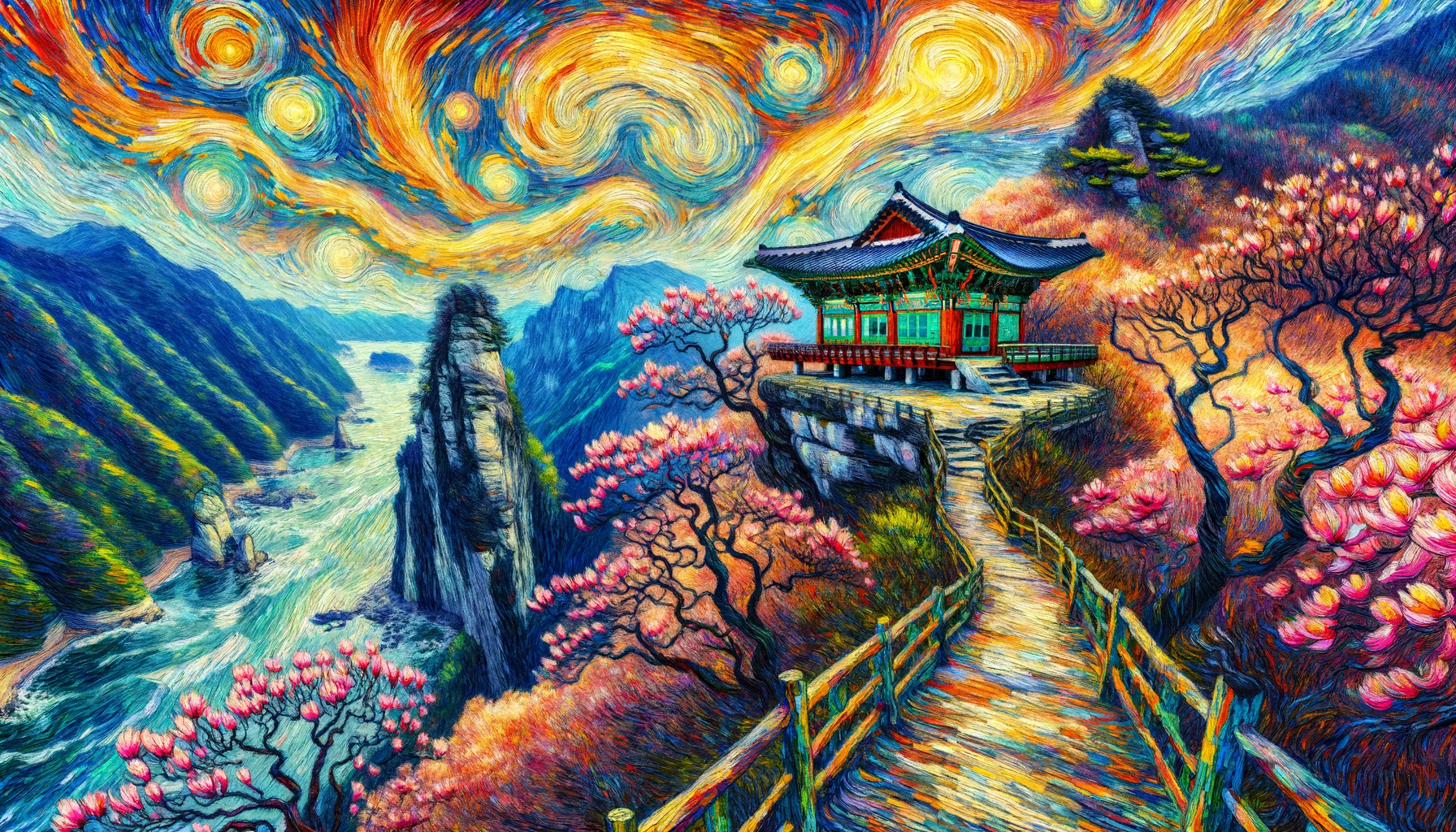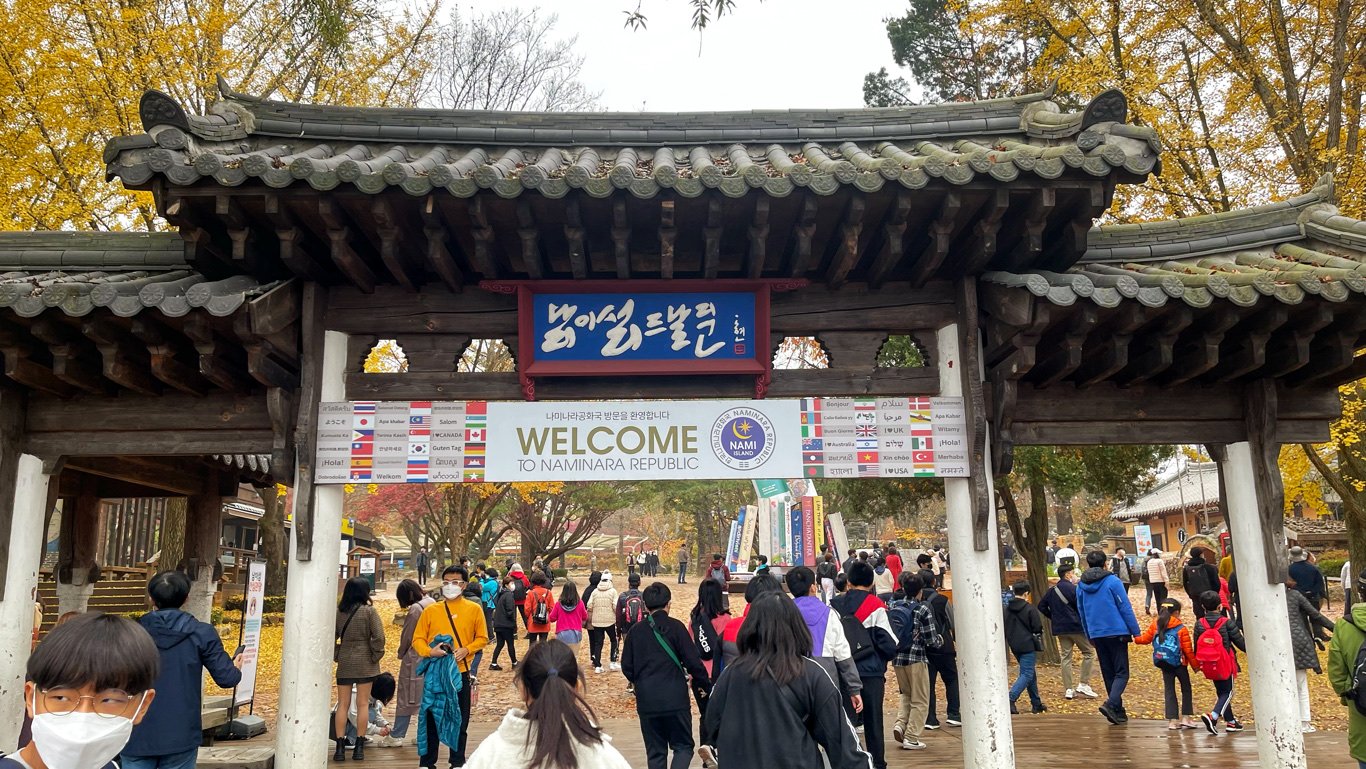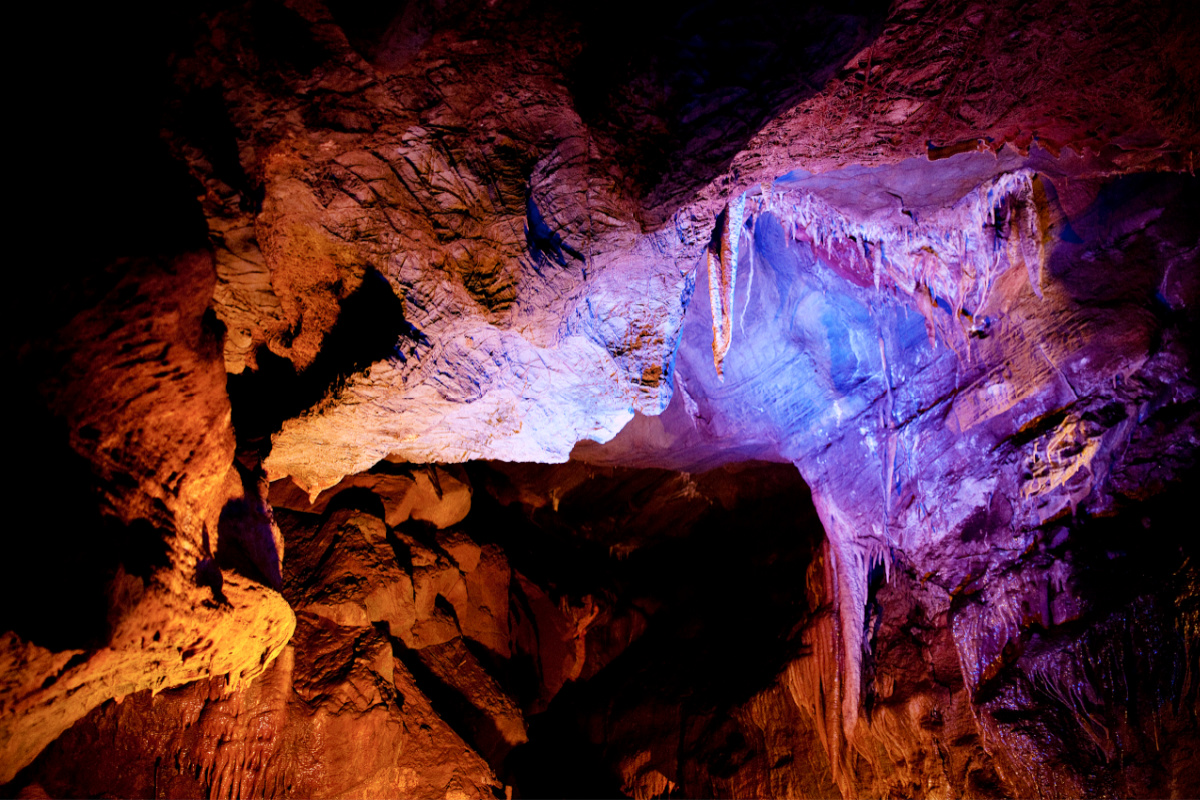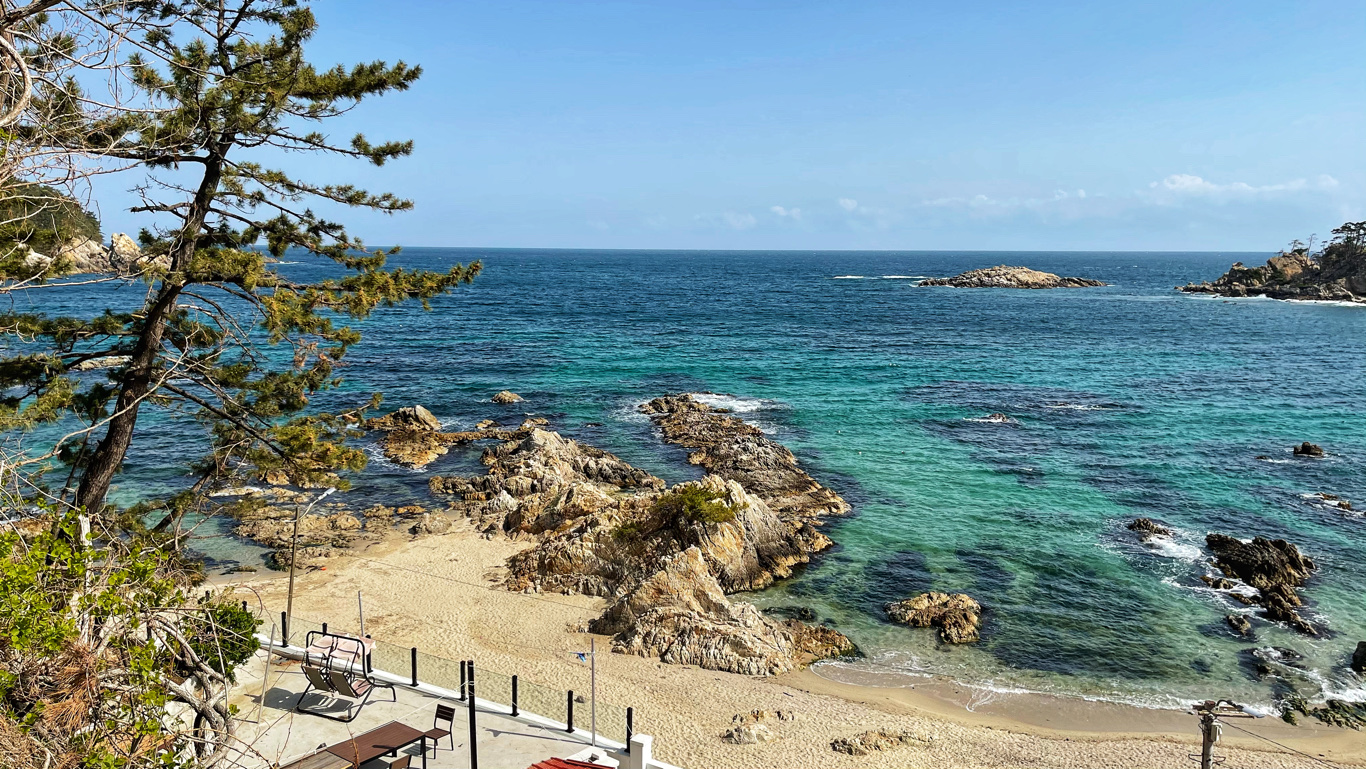Cheongganjeong Pavilion
in Gangwon Province
 An image of Cheongganjeong Pavilion in Gangwon Province, depicted in a style inspired by Vincent Van Gogh
An image of Cheongganjeong Pavilion in Gangwon Province, depicted in a style inspired by Vincent Van GoghCheongganjeong Pavilion In Gangwon
Cheongganjeong Pavilion, located in the northern region of Gangwon Province, is a historic and picturesque site that offers breathtaking views of the eastern coast of Tosung-myeon, Gosung-gun.
It is considered one of the most significant pavilions in Korea due to its rich cultural heritage and natural beauty.
Cheongganjeong Pavilion has a fascinating history that dates back to the Joseon Dynasty, and it has been praised by many poets and scholars throughout history, including Song Gang Jeongcheol, the founding father of Korean literature.
In this article, we will explore this iconic landmark's history, architecture, and scenic beauty and how it has become a popular tourist destination for locals and foreigners alike.
Cheongganjeong Pavilion in Gangwon Province is a splendid pavilion that stands proudly at the edge of a sheer cliff.
As you ascend the short mountain path adorned by lush magnolia trees, you can't help but feel excited about the breathtaking view that awaits you.
Once you reach the top, you'll have an unparalleled view of the Cheonggancheon Estuary and rocky cliffs to the south and north.
Moreover, the eastern and western views encompass the east coast and the ridges of Seoraksan Mountain, making it one of the most coveted scenic spots in the whole of Gangwon Province.
The pavilion itself is an amazing sight. With its two-story octagonal roof structure, Cheongganjeong is much larger than typical pavilions, supported by twelve giant pillars.
The unique feature of Cheongganjeong is the two plaques inscribed with the characters "淸澗亭" (Cheongganjeong) inside and outside the pavilion.
The outer plaque was rewritten in 1928 by independence activist Cheongpa Jeon Hyeongyun, as the original plaque written by Uam Song Siyeol was lost.
The inner plaque bears the handwritten inscription of the first President of Korea, Syngman Rhee.
Unsurprisingly, the scenery of Cheongganjeong is renowned in Gangwon Province and is counted among the Gwandong Eight Scenic Views.
The magnificence of this site is challenging to put into words—it's a place you must see to believe. So, if you're ever in Gangwon Province, take some time to visit Cheongganjeong. You won't regret it!
Cultural Heritage
Cheongganjeong is a cultural heritage site of great value in South Korea. It is designated Cultural Heritage No. 32 and is believed to have been constructed around 1520.
Despite being destroyed twice, it was restored in 1920 and again in 1981 under President Choi Kyu-hah.
During its restoration in the 1980s, President Choi Kyu-hah wrote a two-line poem that reflects his fascination with the scenery of Cheongganjeong.
The poem reads:
The sky orders the sea; no tides rise or fall;
The pavilion resembles an ark on the shore.
This poem suggests President Choi Kyu-hah's admiration for the scenery of Cheongganjeong. Many renowned figures, including painters and scholars, have visited this beautiful pavilion.
Cheongganjeong was primarily used for official and dignified gatherings, where scholars displayed their academic prowess, participated in scholarly competitions, and recited poetry.
Let us appreciate the scenery of Cheongganjeong while savoring the exquisite poems left behind by scholars like Takdang Yi Sik.
The sky orders the sea; no tides rise or fall;
The pavilion resembles an ark on the shore.
The red sun, eager to rise, first shoots its rays through the window;
The blue waves, barely stirring, already rustle the hem of my robe.
Two young men in a boat, led by the wind,
The fairy peaches of the Queen Mother ripen late,
Unable to reach the tracks of the immortals,
I lean against the railing, gazing at the white gulls flying.
The poem above can be interpreted in various ways depending on the reader or interpreter. However, I like the interpretation below...
This poem is a classic example of Korean landscape poetry that describes the beauty of nature and its relationship with human emotions.
The first two lines depict the harmony between the sky and the sea, showing that everything in nature has an order and a purpose.
Compared to an ark on the shore, the pavilion provides a sense of security and stability, indicating that nature can offer protection and refuge to human beings.
The rest of the poem focuses on the poet's personal experience of enjoying the beauty of nature.
The contrast between the red sun and the blue waves creates a vivid image, and mentioning the young men in the boat adds a sense of adventure and excitement.
The fairy peaches of the Queen Mother ripening late and the inability to reach the tracks of the immortals suggest the transience of human life and its limitations.
However, the final image of the white gulls flying brings a sense of freedom and hope, indicating that even though humans may be limited in their abilities, nature can offer a sense of transcendence and liberation.
Thanks for reading this page.
Hope you have an amazing and very memorable travel to the place should you decide in the future!
- Home
- Gangwondo Attractions
- Cheongganjeong Pavilion In Gangwon
Get Exciting Activities
Book one of our exciting activities today to experience the thrill of a lifetime! Take advantage of this opportunity and secure your spot in advance.
Hotel Map Guide
Find your affordable, accessible, and comfortable hotel in Seoul at Agoda.Com. See the hotel map below...
Hotel Booking Guide
Find affordable and amazing hotels on Agoda.com using the search box below. Book now to enjoy great discounts and save!







New! Comments
What do you think about this page? Leave me a comment in the box below.